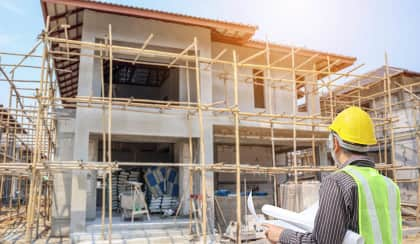The best state for home builders right now
For buyers looking for a house and land package, one state presents a better opportunity than the rest.

According to the Housing Industry Association’s (HIA) Housing Scorecard, South Australia takes the cake when it comes to affordable building.
The half-yearly report presents an analysis wherein the eight states and territories are ranked based upon their performance within 13 key residential building indicators against their decade average.
These 13 parameters entail a variety of metrics, covering detached and multi-unit building activity, renovations, housing finance and rates of overseas and interstate migration.
In response to South Australia carving out the top spot, Stephen Knight, executive director of HIA South Australia, stated: “South Australia is one of the few markets where first home buyers can still afford a house and land package.”
Knight further detailed South Australia’s relative affordability as a testament to the increasing number of people choosing it over the larger states to the east.
The director further cited the recent efforts of South Australia in increasing higher density development in areas well serviced by transport as an initiative that will help to meet housing demand going forward.
This growth shows no signs of slowing either, with HIA’s findings showcasing South Australia as possessing the nation’s strongest renovations sector that has remained well above pre-pandemic levels of activity.
“South Australia has the strongest detached housing sector in the nation with activity remaining resilient to the rise in cash rate,” Knight explained.
Queensland achieved second place in the rankings after trading places with South Australia over the last few years. HIA attributed this result to the significant number of overseas migrants and interstate arrivals coming into the state – a sizeable number coming from NSW and Victoria.
Western Australia’s turnaround in jumping from the seventh position into third in just one year was chalked up to the state capitalising on its affordability advantages and substantial economic and employment opportunities.
Assessing the performance of the top three states, Knight proclaimed that “the main constraint for Australia’s mid-sized jurisdictions at the moment is simply getting enough labour to meet their housing demands, a constraint which is gradually easing”.
Contrastingly, Knight described the largest states, Victoria and NSW as “facing the most acute land affordability constraints in the nation” that has affected their detached housing markets by rendering them “more vulnerable to the compounding effect of rising interest rates”.
These factors, in conjunction with the decline in apartment developments from state government taxation of housing investment, were stated as cementing these two states within the fourth and fifth positions respectively.
Among the smaller states that rounded out the rankings, the ACT’s relative prominence in the sixth position was explained as a result of its multi-units sector and local authorities’ commitment to higher density living. Despite this engagement, the significant number of residents leaving the state since the ebbing of the pandemic were highlighted by the HIA as a point of concern.
In discussing Tasmania’s slide down the rankings to the penultimate position, Knight expressed this as a reflection of the investors and local residents leaving the state, particularly after these groups had been such important drivers of Tasmania’s pandemic and pre-pandemic booms.
Within the bottom position, the Northern Territory was described by Knight as “still dependent on major government or mining sector investment to push it significantly up the rankings”.
“The synchronised cycle of the pandemic is coming to an end. The mid-sized states are pulling ahead,” concluded Knight.
